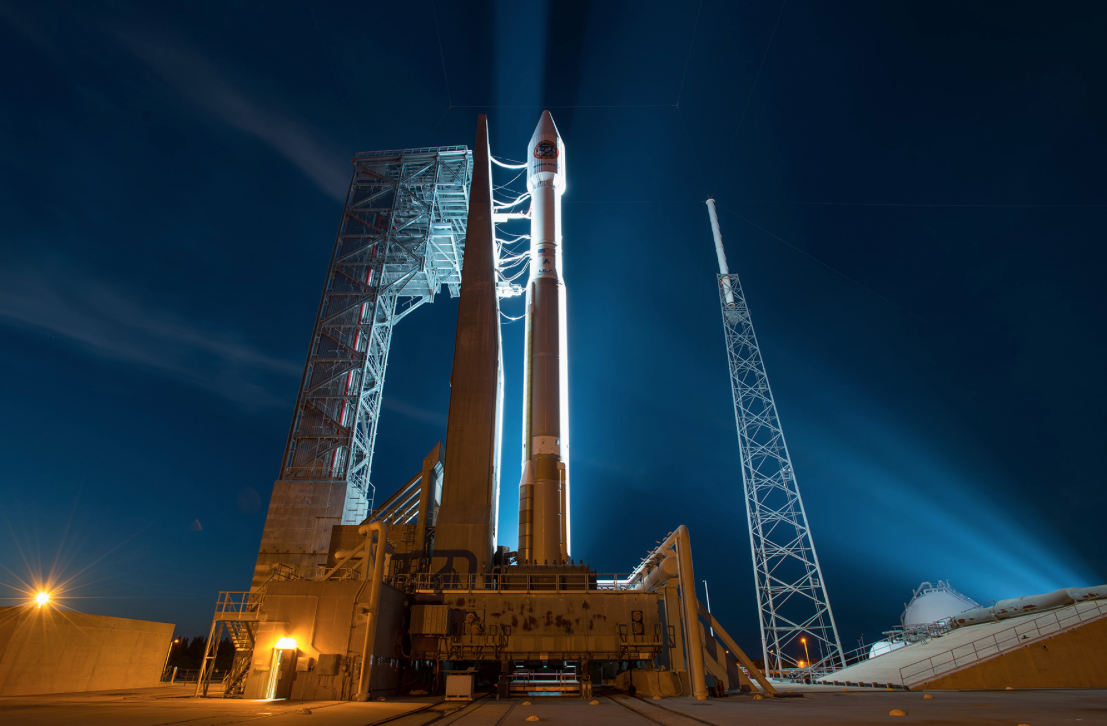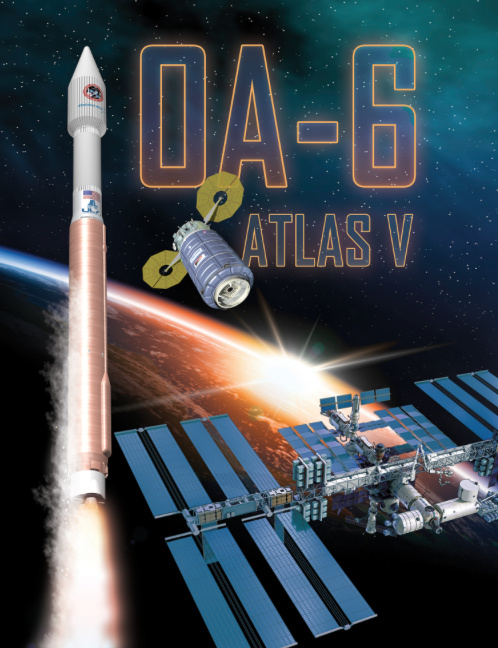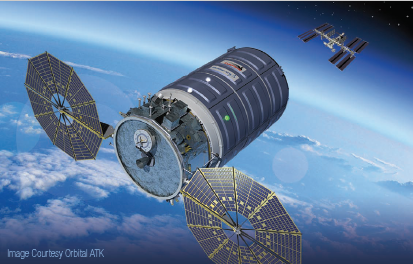
Cape Canaveral Air Force Station, Florida. (March 21, 2016) A ULA Atlas V rocket stands ready to launch OA-6 spacecraft to for Orbital ATK and NASA. Photo credit: United Launch Alliance
[Satnews] Everything is progressing towards the OA-6 launch of the Cygnus spacecraft for Orbital ATK under the NASA Commercial Resupply Services (CRS) contract.The mission is set to lift off on a ULA Atlas V rocket on Tuesday, March 22 from Space Launch Complex 41 at Cape Canaveral Air Force Station in Florida.
The 30 minute launch window opens at 11:05 p.m. EDT. Today’s L-1 forecast shows a 90 percent chance of favorable weather conditions for launch.
Rocket/Payload: A United Launch Alliance Atlas V 401 will launch Orbital ATK’s Cygnus™ spacecraft on the initial leg of its cargo resupply mission to the International Space Station (ISS).
Webcast: The live webcast will begin at 10 p.m. EDT.

Weather Forecast
Overall probability of violati
Overall probability of violating weather constraints for 24 hour delay: 20 percent
Primary concern: Cumulus Clouds
Mission Description: Cygnus is a low-risk design incorporating elements drawn from Orbital ATK and its partners’ existing, flight-proven spacecraft technologies. Cygnus consists of a common Service Module (SM) and a Pressurized Cargo Module (PCM). The SM is assembled and tested at Orbital ATK’s Dulles, Virginia, satellite manufacturing facility and incorporates systems from Orbital ATK’s flight-proven LEOStar™ and GEOStar™ satellite product lines. The PCM is based on the Multi-Purpose Logistics Module (MPLM), developed and built by Thales Alenia Space of Italy.
Launch Notes: OA-6 will mark the 62nd launch of the Atlas V and ULA’s 106th launch since the company was founded in 2006. This will be ULA’s second mission supporting ISS cargo resupply.

ATLAS V OA-6 MISSION
A ULA Atlas V 401 rocket will launch the Cygnus™ spacecraft on the initial leg of its cargo resupply mission to the International Space Station. Liftoff will occur from Space Launch Complex 41 at Cape Canaveral Air Force Station, Florida.
Orbital ATK developed the Cygnus advanced maneuvering spacecraft to perform ISS cargo delivery missions under the Commercial Resup¬ply Service (CRS) contract with NASA. Orbital ATK is under contract to deliver 28,600 kg (63,052 lb) of cargo over the life of the CRS-1 contract. At a total weight of 7,400 kg (16,315 lb), OA-6, which includes 3, 513 kb (7,745 lb) of cargo and the external deployer carrying Cubesats, will be the heaviest payload to launch aboard an Atlas V vehicle.
Cygnus is a low-risk design incorporating elements drawn from Orbital ATK and its partners’ existing, flight-proven spacecraft technologies. Cygnus consists of a common Service Module (SM) and a Pressurized Cargo Module (PCM). The SM is assembled and tested at Orbital ATK’s Dulles, VA, satellite manufacturing facility and incorporates systems from Orbital ATK’s flight-proven LEOStar™ and GEOStar™ satellite product lines. The PCM is based on the Multi-Purpose Logistics Module (MPLM), developed and built by Thales Alenia Space of Italy.
The OA-6 mission is the second consecutive Cygnus flight onboard the Atlas V, following an extremely successful OA-4 mission in December 2015. The Cygnus spacecraft for the OA-6 mission is the first to fly the Saffire experiment, developed and built by NASA’s Glenn Research Center, that tests properties of combustion in microgravity, and the first to fly an external deployer carrying Cubesats, that will be deployed after separation from the ISS. It is the second flight of Orbital ATK’s enhanced Cygnus featuring a larger PCM with increased cargo capacity and an optimized Service Module design including Orbital ATK’s lightweight UltraFlex solar arrays.
ATLAS V 401
The Atlas V 401 rocket has become the workhorse of the Atlas V fleet, delivering half of all Atlas V missions to date. In its nearly 14 years of service, the 401 has delivered 19 national security missions to orbit including seven GPS satellites. The 401 rocket has also completed nine science and exploration flights, including two missions to Mars, a mission each to the sun and moon as well as one previous resupply mission to the International Space Station.
First Launch: Aug. 21, 2002
Launches to date: 31
Performance to GTO: 4,750 kg (10,470 lb)
Performance to LEO-Reference: 9,800 kg (21,600 lb)
Copyright © 2016 United Launch Alliance, LLC. All Rights Reserved.

